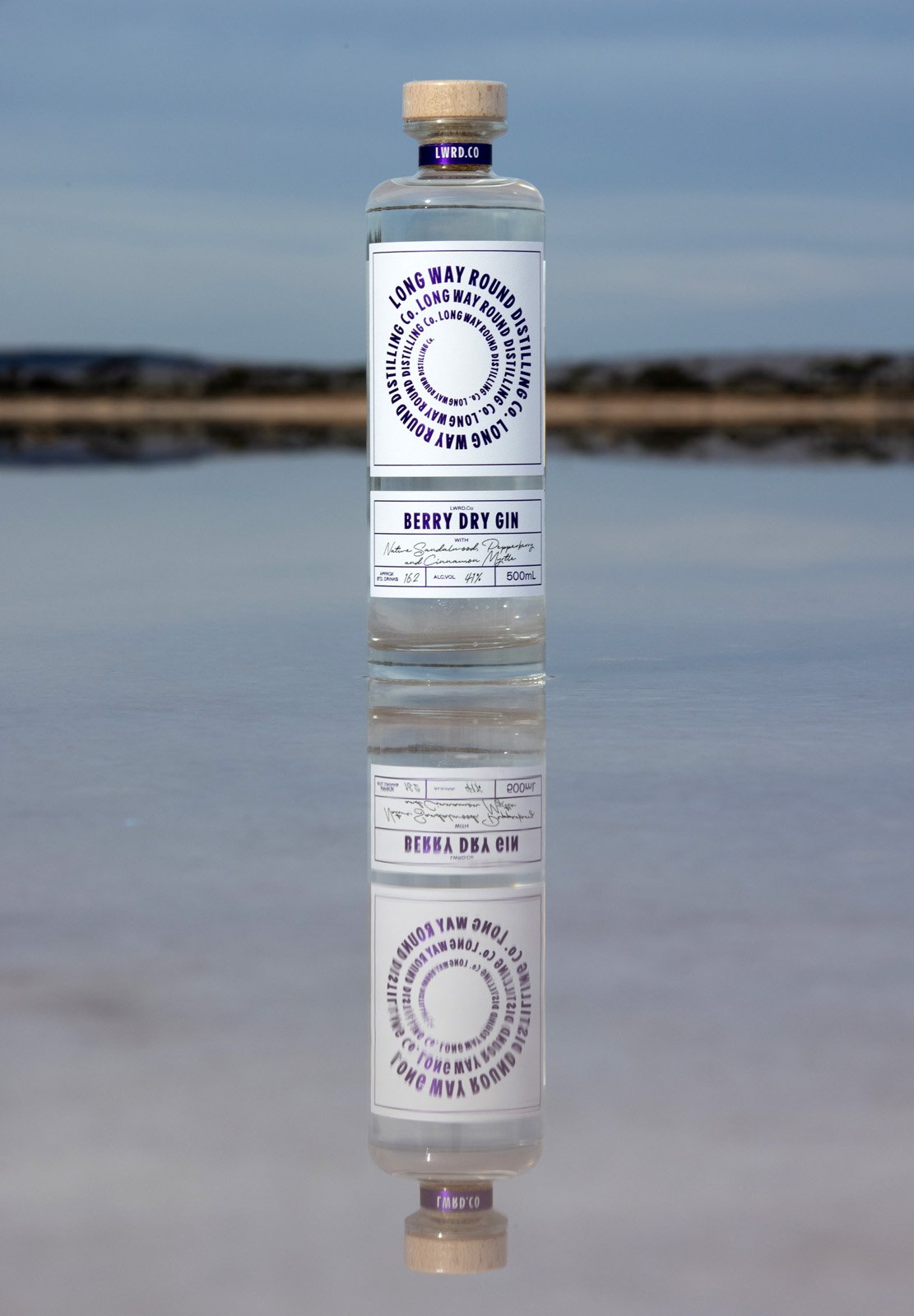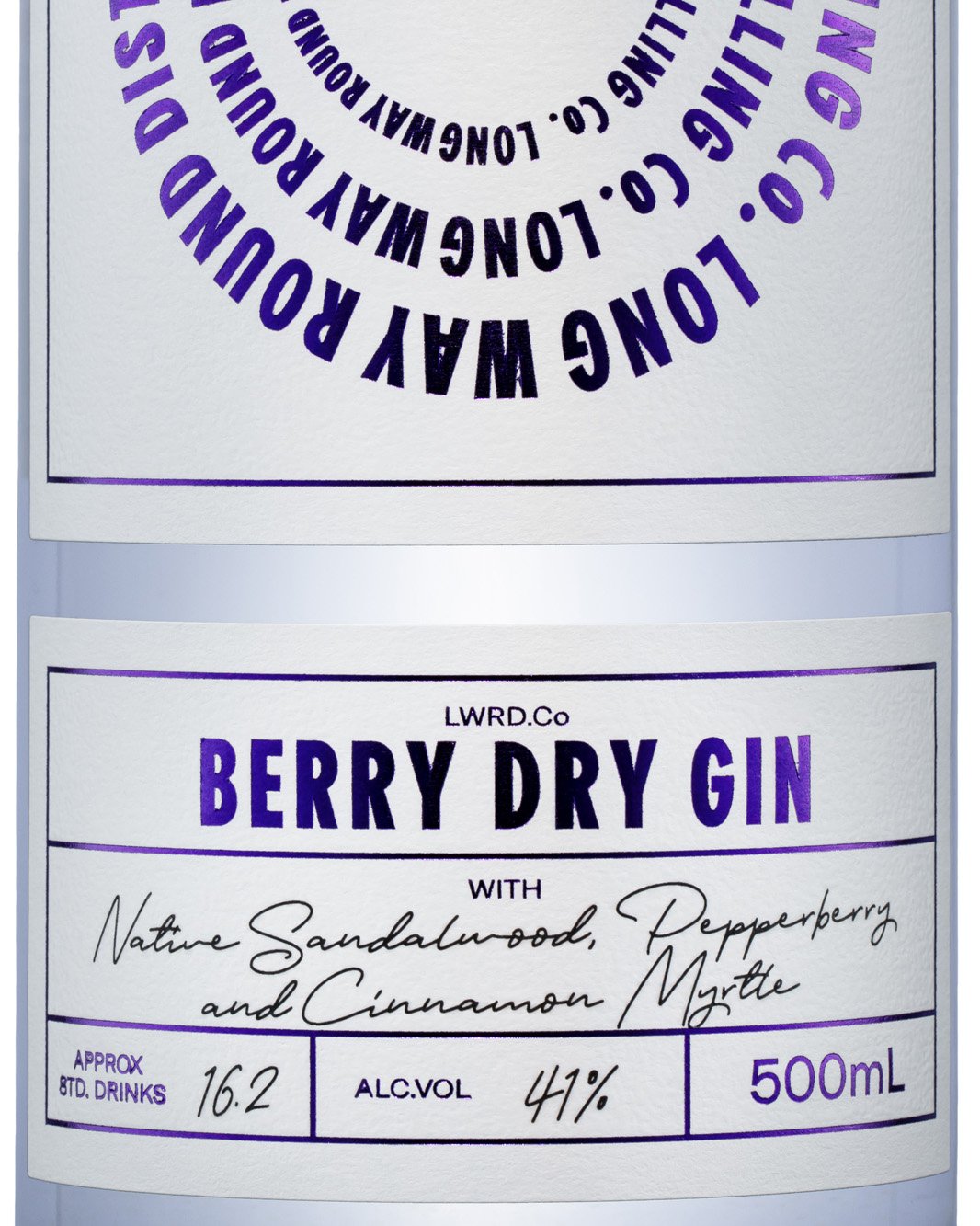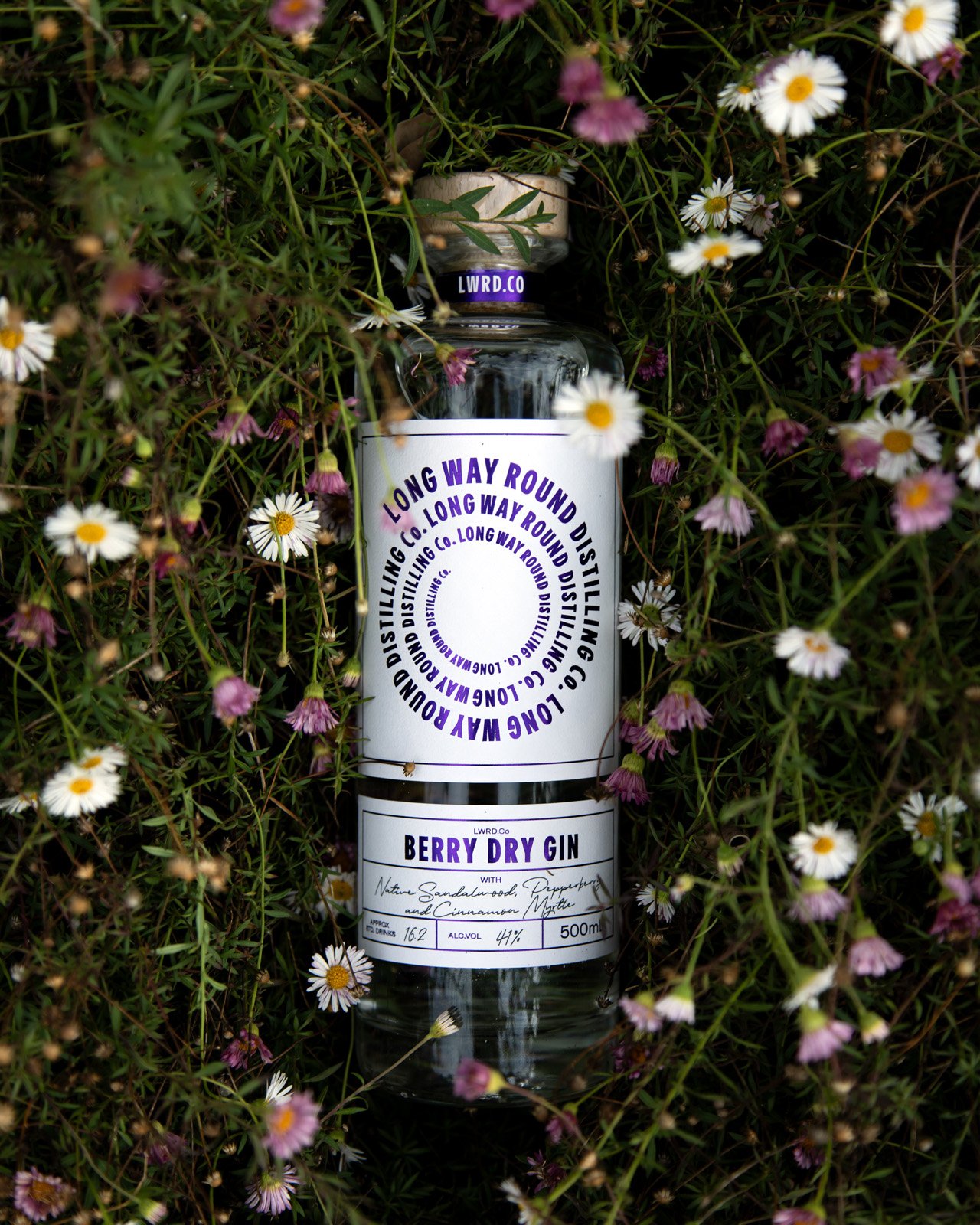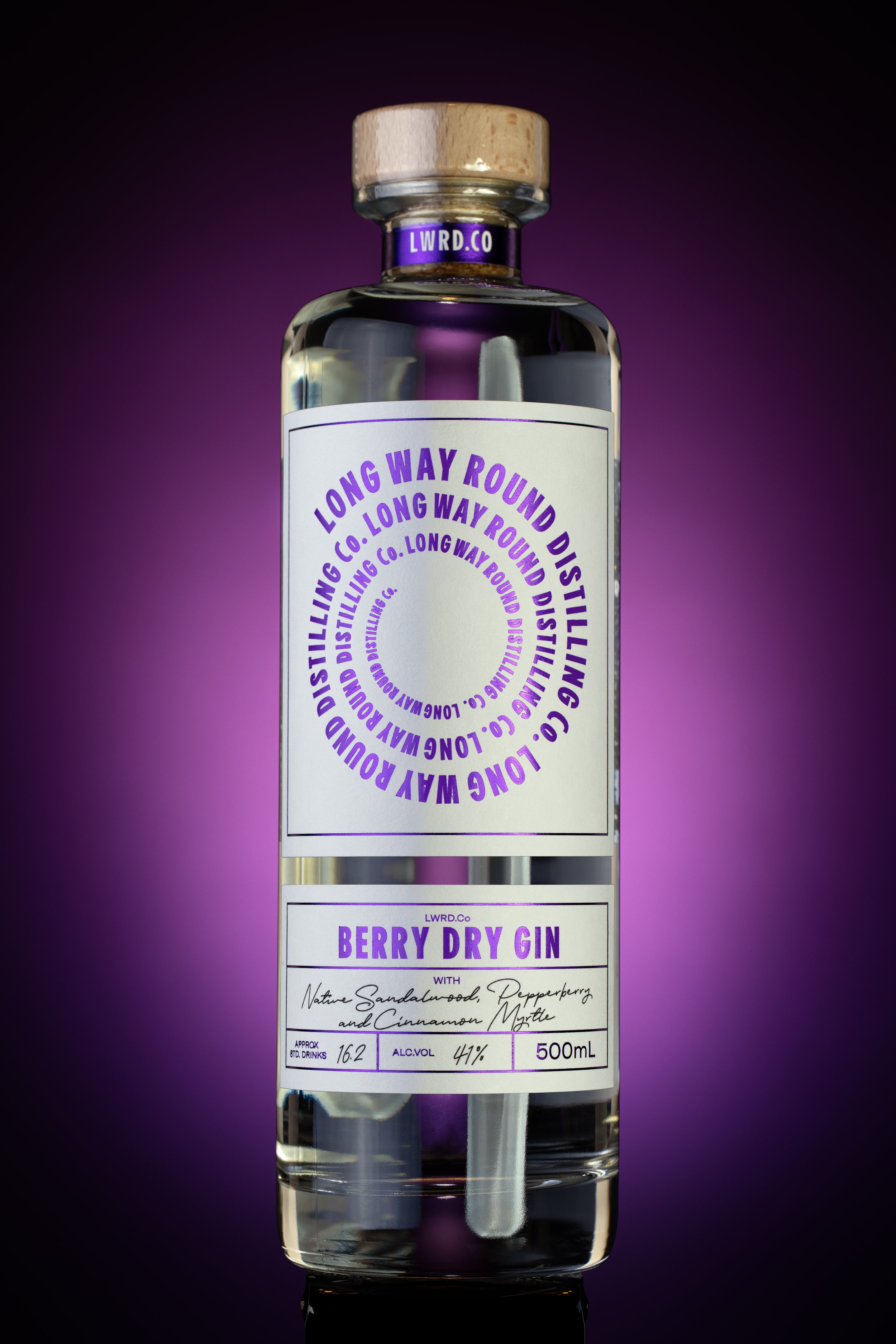Berry
Dry Gin
Red juniper, sandalwood, pepperberry & Cinnamon myrtle
Our second take on an Australian style gin – Completely different to our first gin, giving warm, dark berries and earthy tones. It leans more towards a standard style of gin, but unlike anything else.
It’s name, a pun, comes from the four different types of berries it contains, each of which has a completely different flavour profile. Juniper, Red Juniper, Elderberry & Pepperberry are the four “berries” present along with Coriander, Orris Root, Native Sandalwood, Cinnamon Myrtle, Cardamom & Davison Plum are the botanicals used in our gin; Giving it a strong flavour profile. On the nose, there are strong hints of dark berries and fragrant sandalwood. On the palate, the familiar prescence of juniper with a twist. The earthiness of elderberry and warming of pepperberry appear.
This gin is a polar opposite of our first release but, again, something totally different and unique. Whilst it is a juniper dominant gin, there are a medley of native flavours that make this gin one of a kind.
Red Juniper
-
Red Juniper (Juniperus oxycedrus) is s a species of juniper, native across the Mediterranean region, growing on a variety of rocky sites from sea level. The specific epithet oxycedrus means "sharp cedar" and this species may have been the original cedar or cedrus of the ancient Greeks.
-
Compared to regular juniper, the red variety has less of the characteristic piney flavour and more of a fruity berry-like flavour.
-
Bulgaria via our Melbourne Supplier
Elderberry
-
(Sambuccus nigra) European elder is a large shrub or small tree that grows up to 30 feet tall in wet or dry soil in a sunny location. Elder is native to Europe, Africa, and parts of Asia. Deciduous leaves grow in opposite pairs and have 5 to 7 leaflets. Flowers are white and flat topped with 5 primary rays. Berries are green, turning red, then black when ripe.
-
Elderberries are lightly sweet, tart, earthy, and slightly bitter. They bring woodsy, floral, and dark fruit notes that are quite complex.
-
Poland & Croatia via a Melbourne Supplier
native sandalwood
-
(Santalum Spicatum) Australian Sandalwood, most commonly associated with incense and perfumes, produces delicious edible fruit and nuts. The nuts also produce a fine oil, traditionally used in Aboriginal medicine as a liniment for body aches. Sandalwood trees can be found in the woodlands and shrublands of southern WA and SA.
-
Sandalwood nuts can be consumed raw or roasted and have a creamy, nutty taste similar to a macadamia, hazelnut, or almond.
-
We deal directly with a hobby farmer located in the Western Australia wheatbelt
Pepperberry
-
(Tasmannia lanceolata) Pepperberry, also known as Mountain Pepper, is an evergreen shrub often used as a culinary spice. It can be found in Aboriginal cuisine as a food flavouring, as well as in traditional medicine as a treatment for skin disorders, venereal diseases, colic and stomach ache.
-
sweet, fruity and pungent, with an intense peppery bite, that builds and lingers on the back palate.
-
Organically farmed in Tasmania and via our local Adelaide supplier
Cinnamon Myrtle
-
(Backhousia myrtifolia)
Another member of the spectacular Myrtle family, this evergreen tree is native to the coastal rainforests of eastern Australia. Cinnamon Myrtle is known for its aromatic leaves, which have a lovely cinnamon-nutmeg fragrance.
-
Cinnamon, nutmeg & herbaceous
-
Organically farmed in the Adelaide Hills via our local Adelaide supplier










